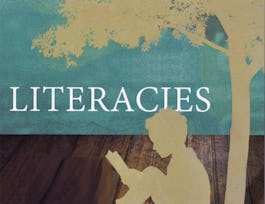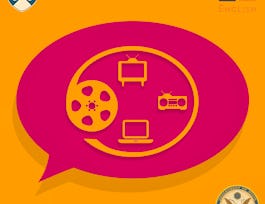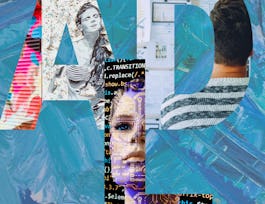Whereas the focus of traditional literacy pedagogy has been the written word in its standard and literary forms, this courser expands the scope of literacy learning to encompass contemporary multimodal texts and the wide range of ways of making meaning that occur in different social and cultural contexts. Another course, "Literacy Teaching and Learning: Aims, Approaches and Pedagogies" addresses pedagogical aspects of literacies. This "Multimodal Literacies" learning module does not require or expect that participants will have already completed the "Literacy Teaching and Learning" module.



Multimodal Literacies: Communication and Learning in the Era of Digital Media


Instructors: Dr William Cope
Sponsored by PTT Global Chemical
14,705 already enrolled
(165 reviews)
Details to know

Add to your LinkedIn profile
1 assignment
See how employees at top companies are mastering in-demand skills


Earn a career certificate
Add this credential to your LinkedIn profile, resume, or CV
Share it on social media and in your performance review

There are 4 modules in this course
This module introduces the key ideas of the course: communication, representation (or making meanings for oneself as an aid to thinking), and the design of meaning. Today, our tools for communication and representation have been widely expanded by digital tools. For these reasons, we need to extend our literacy pedagogy to encompass literacies in the plural, including a wider range of modes of meaning than alphabetic text alone.
What's included
4 videos9 readings1 assignment1 peer review2 discussion prompts1 plugin
This module begins with an overview of the conventional focus of literacy pedagogy – reading and writing. In its second half, the module applies a parallel set of tools to analysis of visual meanings.
What's included
16 videos3 readings3 peer reviews3 discussion prompts
In this third module of the course, we examine spatial, tactile, gestural, audio, and oral meanings – all today part of a wider repertoire of teaching and learning that we call "literacies" in the plural, or "multiliteracies." In the final section of the module, we explore how we use literacies to think in characteristically "academic" ways. In this sense, literacies play a critical supportive role in the learning process.
What's included
13 videos3 readings3 peer reviews3 discussion prompts
The final module of the course examines the question of learner differences – including literacies learning at different age levels and second language learning. We also explore strategies for differentiated instruction. Finally, we investigate the range of assessment strategies that can be used to diagnose learner needs, offer feedback during the learning process, and evaluate learning outcomes.
What's included
13 videos2 readings5 peer reviews2 discussion prompts1 plugin
Instructors

Offered by
Why people choose Coursera for their career




Learner reviews
165 reviews
- 5 stars
89.09%
- 4 stars
5.45%
- 3 stars
1.81%
- 2 stars
0.60%
- 1 star
3.03%
Showing 3 of 165
Reviewed on Aug 14, 2020
it has been a wonderful experience and I'm looking forward to having another knowledge adventure.
Reviewed on Jul 10, 2021
This provides me a lot of information on Learning in teh Era of Digital Media
Reviewed on Nov 19, 2021
Very incisive and comprehensive lectures and videos. The reading materials are accessible and useful. Thank you so much!
Recommended if you're interested in Social Sciences

University of Illinois Urbana-Champaign

University of Pennsylvania

Macquarie University

The State University of New York

Open new doors with Coursera Plus
Unlimited access to 10,000+ world-class courses, hands-on projects, and job-ready certificate programs - all included in your subscription
Advance your career with an online degree
Earn a degree from world-class universities - 100% online
Join over 3,400 global companies that choose Coursera for Business
Upskill your employees to excel in the digital economy


